Cholesterol is confusing. Do you remember your numbers from your last blood test? Do you know what they say about your heart health? Most people would probably answer “no” to both questions because cholesterol can be difficult to understand. What’s more, your high cholesterol may be inherited rather than primarily due to lifestyle factors.
Whether your unhealthy cholesterol profile is genetically linked or a result of poor diet and exercise habits, you can improve your numbers and your health by improving your diet with or without cholesterol-lowering medications. Just adopt the eating habits that science shows are consistent with people who have healthy cholesterol levels. They are many of the same eating strategies that can positively impact your health in many powerful ways.
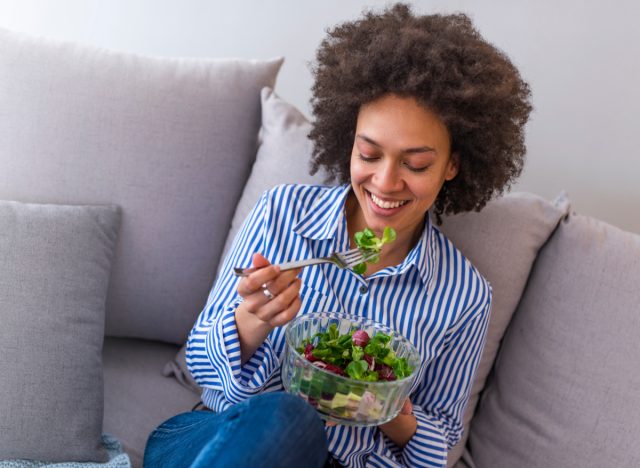

Before we explore those eating habits associated with healthy cholesterol, let’s get a better understanding of what cholesterol is and how it affects our health. Cholesterol is a waxy fat-like substance that rides your bloodstream throughout your body on lipoproteins. It’s fat-like, but not a fat. You can’t burn it off with exercise the way you can fat. (However, exercise plays a key role in affecting the makeup of cholesterol in your bloodstream; on that later.) Your liver makes and regulates cholesterol, which is essential for certain body functions, and you also get it from the foods you eat.
There are two main types of cholesterol-carrying lipoproteins in your body. Low-density lipoprotein or LDL is often referred to as “bad” cholesterol because high levels of it are associated with increased risk for heart disease. High-density lipoprotein or HDL is known as “good” cholesterol because it shuttles LDL cholesterol to the liver where it’s removed from the body.
In recent years, scientists have identified a subtype of LDL that seems to be more dangerous to the cardiovascular system. It’s called small, dense low-density lipoprotein cholesterol (sdLDL-c) and it’s associated with high triglycerides (a blood fat), decreased levels of the good HDL, as well as obesity and metabolic syndrome, which is a cluster of conditions linked to heart disease and diabetes. The trouble with small dense LDL particles is that they are more inclined to attach to the endothelium, the lining of blood vessels, where they can build up into a plaque that can break off and cause a clot that triggers heart attack or stroke. (If you’re over 50, you’ll want to read about the Side Effects of High Cholesterol After 50.
Fortunately, eating habits that promote overall good health and weight loss are the same that may improve your cholesterol profile and lower your risk for cardiovascular disease.
“As a nutritionist, I’ve seen firsthand how a heart-healthy diet that helps reduce LDL cholesterol levels consists of foods rich in fruits, vegetables, whole grains, and healthy proteins and low in added sugar, salt, and saturated fats like butter, and fatty meats,” says registered dietitian nutritionist Lisa Young, PhD, RDN, author of Finally Full, Finally Slim and a member of our medical expert board.
Here are some eating habits common among people who have lowered their cholesterol to healthy levels:
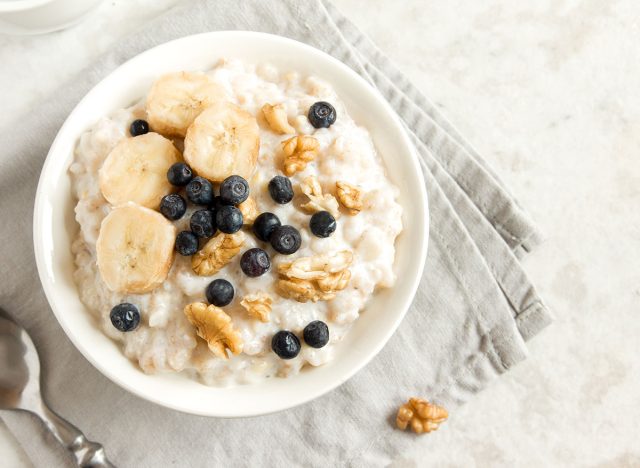

“I have a family history of high cholesterol, so I am conscious of my diet and have managed to keep my cholesterol at a healthy range without any medications,” says nutritionist Christina Laboni, MhSc, RD.
Her go-to breakfast is steel-cut oats. “Oatmeal contains soluble fiber, a type of fiber that helps lower LDL cholesterol in our blood,” she says. “A lot of people will talk about foods to cut out or avoid with high cholesterol which does have a place, but it’s always good to focus on what you can add to your diet rather than take away. Steel-cut oats are the least processed and take longer to cook, so I often make a big batch that I can reheat throughout the week.”
Eaten daily, three to four grams of soluble fiber has been shown in studies to help lower LDL cholesterol almost 10%.
Oatmeal isn’t the only way to boost your soluble fiber intake. “Breakfast is a perfect way to start the day out right, as you have an opportunity to choose many plant-based options for fiber to help lower LDL ‘bad’ cholesterol and raise HDL ‘good’ cholesterol,” says Amber Ingram, RD, a registered dietitian at The Ohio State University Wexner Medical Center. “Soluble fiber is found in the skin and peels of fruits, vegetables, and legumes.”


“It is becoming more clear that genetics play a larger role in how the body processes cholesterol but there are still some dietary habits that can lead to high cholesterol and drinking a lot of sugary beverages is one of them,” says Trista Best, RD, a registered dietitian at Balance One Supplements and a professor of nutrition.
Making a habit of avoiding sugar-sweetened beverages (SSBs) like soda, juice cocktails, sugary alcoholic cocktails, and sweet teas and coffees may help your cholesterol levels. Best points to a 12-year study in the Journal of the American Heart Association involving 6,000 participants that found that increased SSB consumption was associated with high cholesterol, including adverse changes in the good HDL cholesterol and triglyceride concentrations.
READ RELATED: 8 Fast-Food Drinks With Exorbitant Amounts of Fat
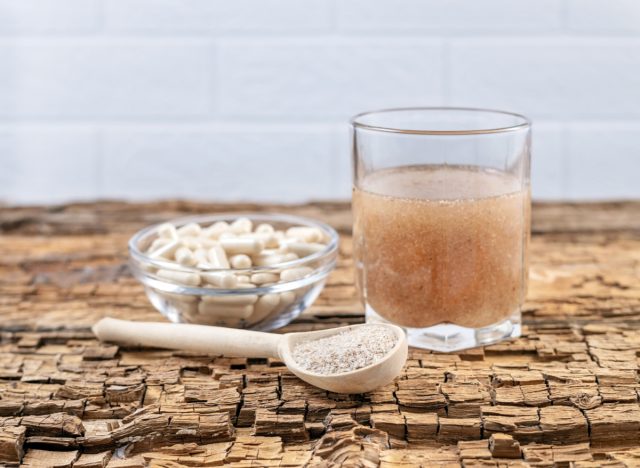

By eating the standard American diet, the average American falls short of the recommended 21 to 25 grams of dietary fiber daily for women and 30 to 38 grams for men grams. And getting enough of the soluble kind is especially difficult. If you’re finding it hard to get enough fiber, one option is to take a fiber supplement like psyllium husks.
“Similar to oatmeal and beans, psyllium husk is a great source of soluble fiber and soluble fiber helps lower cholesterol by binding to cholesterol in the gut so instead of being reabsorbed into the body it is eliminated during bowel movements,” says registered dietitian Veronica Rouse, RD, who specializes in lowering cholesterol with food in her practice and in her blog The Heart Dietitian.
You can mix psyllium husk powder in juice or other beverages. It forms a thick gel in the gut and keeps you feeling full. It’s also available in bars and capsules. One study in a 2018 issue of The American Journal of Clinical Nutrition analyzed 28 clinical trials and found that people who took 10 grams of psyllium husk daily for three weeks significantly lowered their LDL cholesterol (by 13 mg/dL).


Fats are an essential part of a healthy diet, but a certain fat called a trans-fatty acid is terrible for your cholesterol. Trans-fatty acids found in packaged and highly-processed foods liked cookies, crackers, fried foods, pastries, and other baked goods designed for a long shelf life raise total and LDL cholesterol levels and lower the good HDL, says Alyssa Burnison, RD, LN, a registered dietitian with Profile Plan.
Walnuts, by contrast, are loaded with a heart-healthy plant-based version of heart-healthy omega-3 fatty acids, which have been shown to lower total cholesterol and triglycerides, she says. They make a great snack for crushing hunger pangs, she says. Just be careful because nuts are calorically dense.
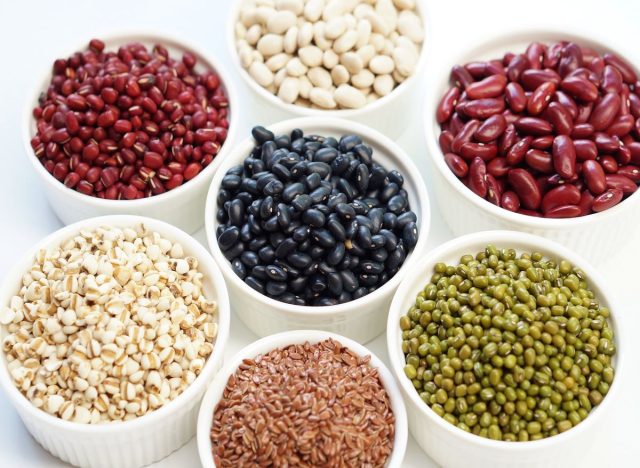

People who have lower cholesterol tend to “enjoy more plant-based proteins like beans, legumes, and tofu instead of red meat which is high in saturated fats,” says Young.
Saturated fat tends to raise LDL cholesterol levels, according to the Mayo Clinic.
“That doesn’t mean you need to ban fats, but it’s best to enjoy unsaturated fats like olive oil and avocado instead of butter and cheese,” she says.
Steve Theunissen, RDN, a veteran certified personal trainer and writer for SmartFitnessResults.com suggests limiting fatty meats, deli meats, cream, ice cream, coconut oil, palm oil, and commercially baked products, and deep-fried takeaway foods, which contain saturated fats and trans fats.
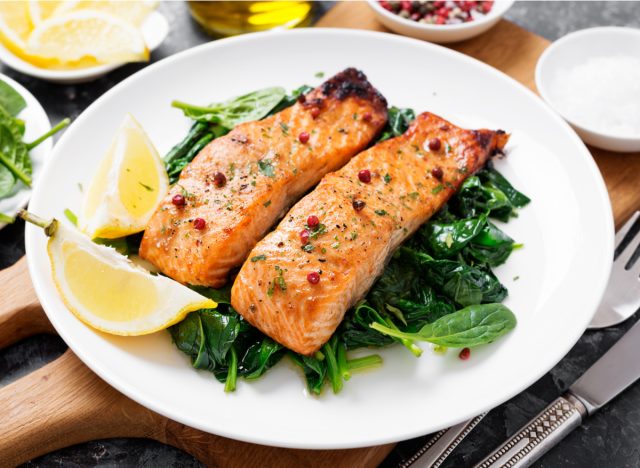

Fatty fish like salmon, sardines, tuna, herring, and bluefish, contain high amounts of heart-healthy omega-3 fatty acids, which are known to reduce triglycerides, a blood fat that like cholesterol figures into the heart disease risk equation. While omega-3s don’t reduce LDL cholesterol levels, some studies suggest “they can help increase our HDL good cholesterol,” says Laboni.
Concerned about her own propensity toward high cholesterol, Laboni says she eats fatty fish at least twice a week and encourages her clients to do the same.
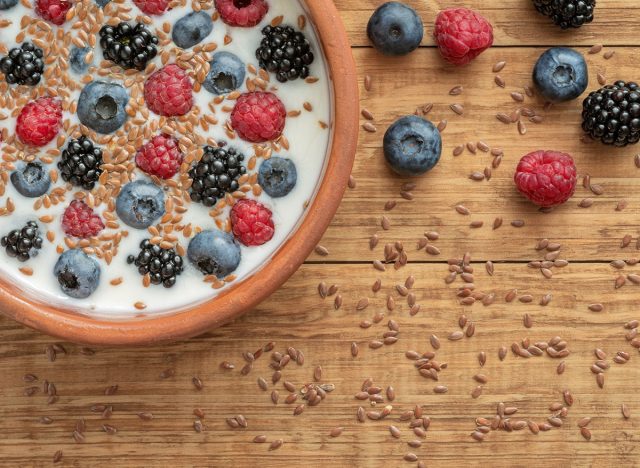

Another excellent way to get more heart-healthy fat in your diet is flaxseed, which is high in alpha-linolenic acid (ALA), a plant-based omega 3. Flaxseed is also a good source of soluble fiber. But there’s another component of flaxseed that seems to be particularly effective on cholesterol: lignans, a polyphenol found in plants that contain phytoestrogens.
A small study involving 37 men and women in the Journal of the American College of Nutrition tested the effects of two flaxseed bars with similar ALA content but two different amounts of lignans. The six-week-long, randomized, double-blinded, placebo-controlled study found that it was the high lignan bars that triggered the most significant change, a 12% reduction in total cholesterol and 25% drop in LDL. Worth noting is the fact that lignans have antioxidant and anti-inflammatory properties and have been linked to reduced breast cancer mortality.
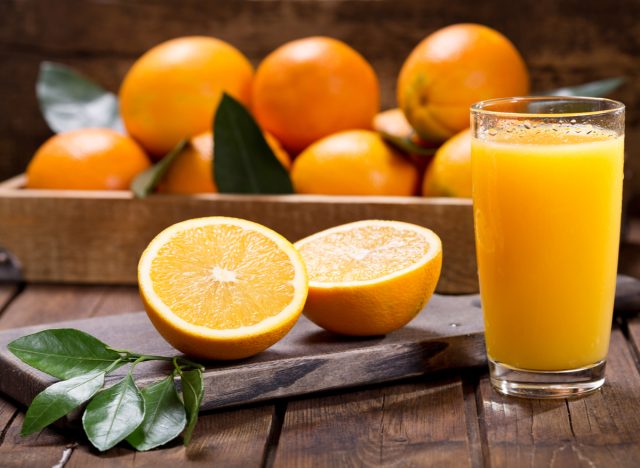

Plant sterols and stanol esters reduce blood cholesterol levels by blocking cholesterol absorption in the digestive system. They are natural compounds found in plant cell membranes, so you’ll get them inside you by eating fruits and vegetables. Unfortunately, you don’t get nearly enough to impact cholesterol through eating fruits and vegetables, so food manufacturers have fortified certain foods like orange juice and butter-like spreads with them.
If you don’t want to take cholesterol-lowering prescription medicines like statins, consider trying a product with plant stanols like Benecol spread. An American Heart Association journal study found that supplementing the diet of participants with a plant stanol ester spread for six months reduced LDL cholesterol and, in particular, the ability of LDL droplets to accumulate on artery walls. For more information on other over-the-counter heart protection, read Best Supplements for High Cholesterol, According to Nutritionists.
Source:










